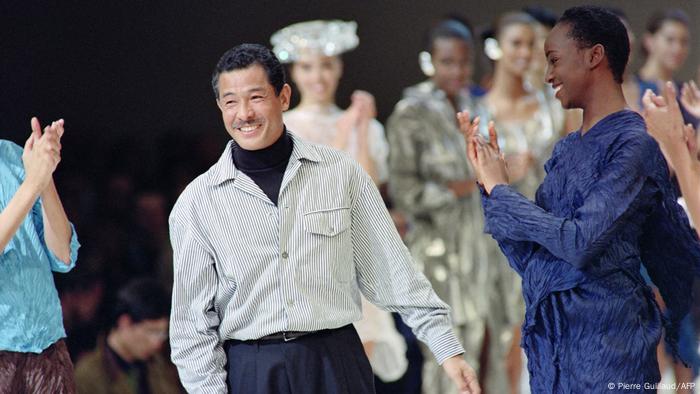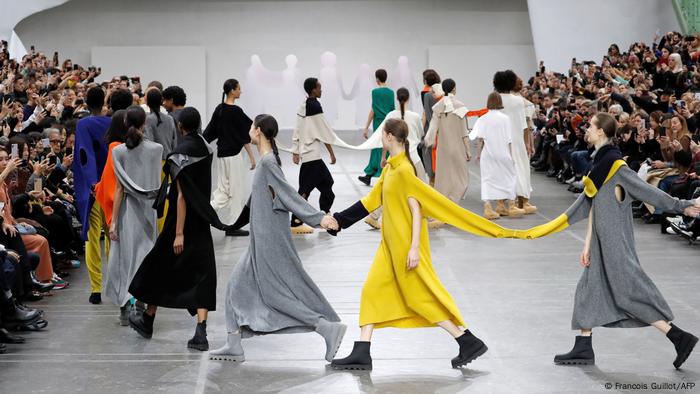Issey Miyake: Japanese fashion designer dies aged 84
He created wrinkle-free fashion and world-renowned perfumes, in addition to dressing Apple founder Steve Jobs.

Innovation was a cornerstone of Issey Miyake's designs
Be it menswear or womenswear, Issey Miyake was a shining star in the fashion world in the 1980s. He loved colorful and heavily pleated fabrics, as well as silk.
His collections "Pleats Please" and "A-POC" (A Piece of Cloth) were international sensations. Designed to minimize waste, A-POC garments were produced in machine-made rolls of knit fabric that was pre-sewn or fused with finished patterns. The user could cut the pattern from the roll to create a ready-made customized garment.
Apple founder Steve Jobs' signature black turtlenecks also came from the House of Miyake; the designer and the computer wizard were close friends.

Applause for the designer in Paris
Inspired by sister's fashion magazines
Issey Miyake was born in Hiroshima on April 22, 1938. As a child, he wanted to become an athlete or a dancer — until his attention was drawn to his sister's fashion magazines. This proved to be a turning point in his life. He studied graphic design in Tokyo and clothing design in Paris, where he worked with famous names in the fashion industry such as Guy Laroche and Hubert de Givenchy.
In 1970, he presented his own first collection in New York. That same year, he founded his Miyake design studio in Tokyo and quickly made a name for himself as one of Asia's most innovative designers. His concept: to produce clothing from a single piece of fabric wherever possible.
Textile research was his vision
Miyake created not only clothes, but also accessories, jewelry and perfume. Above all, however, he was interested in the nature of fabric. In the late 1980s, he developed a new type of pleating in which fabrics retain their shape. Tested on dancers for their freedom of movement, this led to his signature "Pleats Please" line.
Miyake retired from active business in the late 1990s and devoted himself only to textile research. In 2005, he was honored for his life's work with the Japan Art Association's Praemium Imperiale, a global honor considered the Nobel Prize for the arts. A year later, he received the Kyoto Prize for his "visionary clothing concepts." The prize, established in 1984 by Kazuo Inamori, founder of the Japanese technology corporation Kyocera, is one of the most important awards in the field of science and culture alongside the Nobel Prize.

Miyake's revolutionary fashion
Creating beautiful things
In interviews, Miyake was often asked about the atomic bomb dropped on his hometown of Hiroshima in 1945 when he was seven years old. But he stressed that he did not want to be labeled "the designer who survived."
"I have never chosen to share my memories or thoughts of that day," Miyake wrote in a 2009 commentary for The New York Times. "I have tried, albeit unsuccessfully, to put them behind me, preferring to think of things that can be created, not destroyed, and that bring beauty and joy. I gravitated toward the field of clothing design, partly because it is a creative format that is modern and optimistic."
Issey Miyake died on August 5, according to the Japanese news agency Kyodo. The Asahi Shimbun newspaper and other Japanese media reported that the cause of death was said to be liver cancer.
suc/pg (Reuters, dpa, AFP)
No comments:
Post a Comment